10 Foods That Grow Muscle Fast
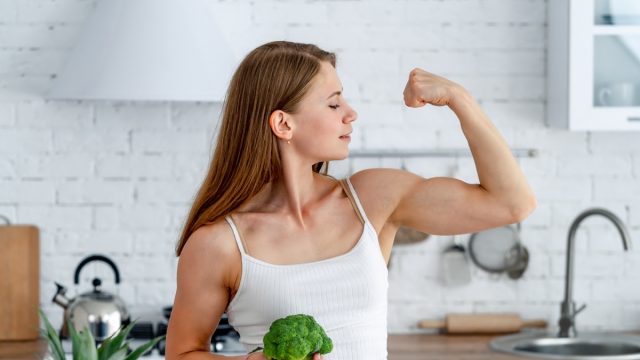
Muscles are not just for show. They are vital for survival when it comes to pumping blood or breathing. They're essential for everyday activities like carrying groceries or picking up children. They also benefit us in the long-term by maintaining a healthy weight, keeping our joints healthy, reducing risk of certain diseases, and preventing falls or other injuries. I have multiple certifications in fitness and nutrition as well as 15 years experience in corporate jobs before being a full-time coach. This means I understand how difficult it is to build muscle on a busy schedule. In addition to coaching over 100 clients per year, I added 15 pounds of lean muscle during my last few years working full-time in marketing. I did this while also being a dad of two young kids. I am proof that anyone can do it if they optimize their diet appropriately. Here's exactly what to eat to grow muscle fast.
Grass-Fed Beef
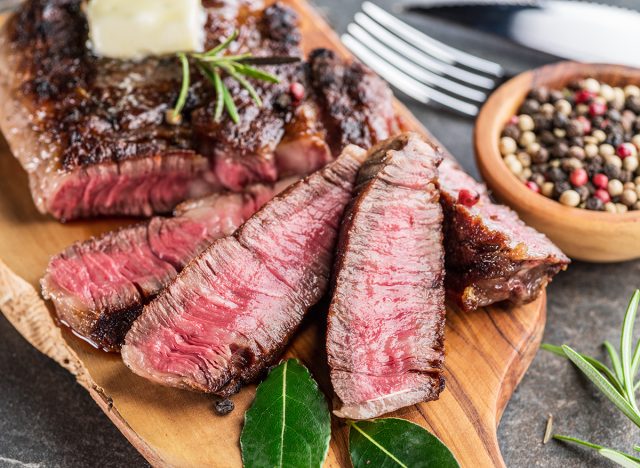
The first food I recommend for growing muscles fast is grass-fed beef. Almost everyone knows protein is important for muscle building. What most people don't know is "protein" is a term for multiple amino acids. Not all protein is complete (meaning not all proteins contain all nine amino acids that we get from food). And then not all complete proteins are equal, because each food we eat is handled differently by the body. Our bodies absorb more protein from grass-fed beef than other plant-based proteins, for instance. It's also incredibly nutrient-dense. Grass-fed beef is a great source of iron, B12, zinc, and more. It's also important to note that not all beef is created equal. Grass-fed beef is usually lower in calories and can have higher omega-3.
💪🔥Body Booster: When in doubt, avoid processed red meat. Don't be afraid to spend more money to get high-quality beef. My favorite burger is from my local burger place Super Duper Burger. They use only high-quality grass-fed beef and as they say, a burger shouldn't cost $3.
Related: I Sculpted My Arms With These 4 Simple Tricks
Eggs
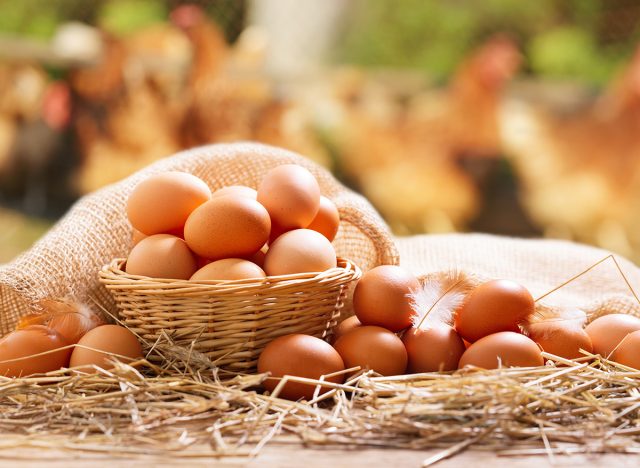
The second food for growing muscles fast are eggs. Eggs are loaded with vitamins, minerals, and of course, high-quality protein. Another reason eggs are a top choice for building muscle are how cheap they are and easy they are to cook. A dozen eggs can usually be found for $3-$8, depending on where you live and what type you buy. That means you can have 4 eggs, and eat about 25g of protein, for the cost of $1-$3. Eggs can also be cooked in seconds, hard-boiled for meal prep, or used in meals such as salads, noodle dishes, or even on top of burgers.
💪🔥Body Booster: If you're a busy parent like me, you know that you don't always have time to cook a healthy meal. Eggs end up being my go-to breakfast several mornings a week. And sometimes at night if I don't have time to cook – breakfast for dinner is better than eating a box of pasta! One of the questions I hear often is "is 3 or 4 eggs too many"? My response to that is – 4 eggs is definitely way healthier for you than a bagel or muffin!
Whey Protein Powder
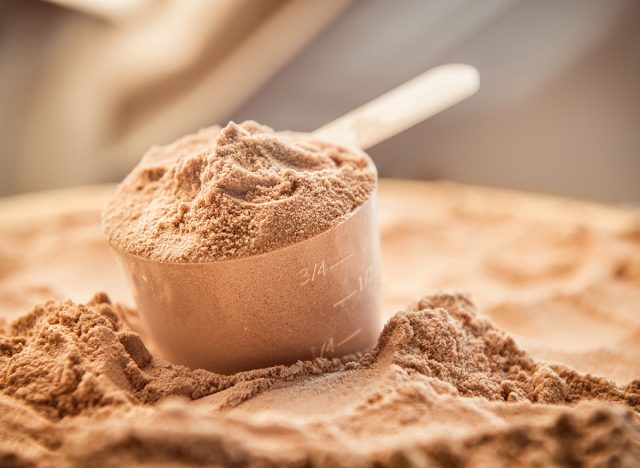
Whole foods are always going to be better than supplements, but supplements are better than skipping it altogether. For many people it is very hard to hit a daily protein goal without a supplement. Whey is the best absorbing protein powder and it can go into all kinds of foods including oatmeal, smoothies, and yogurt.
Greek Yogurt
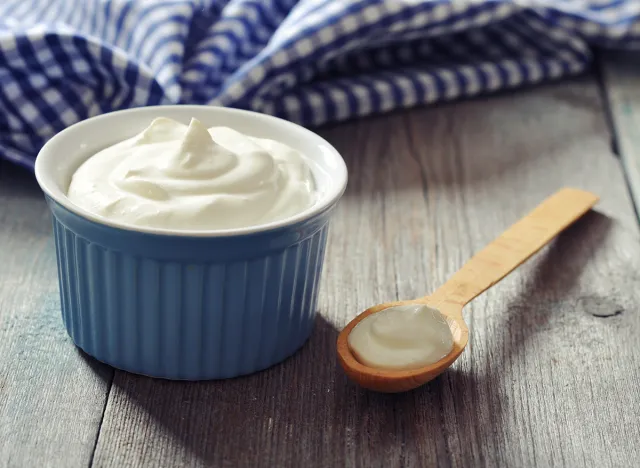
It's high in protein but also high in calcium which is good for strong bones. Greek yogurt also contains probiotics which can help with gut health. And of course it is also easily accessible. Greek Yogurt requires no cooking or meal prep so it's a great go-to breakfast at home or on the road since it's sold in most airports and convenience stores.
💪🔥Body Booster: Avoid traditional yogurt, especially because it's often flavored with added sugar. Try adding fresh fruit, granola, or honey to your Greek Yogurt to improve the taste.
Related: What Happens to Your Body When You Stop Taking Ozempic
Wild-Caught Salmon
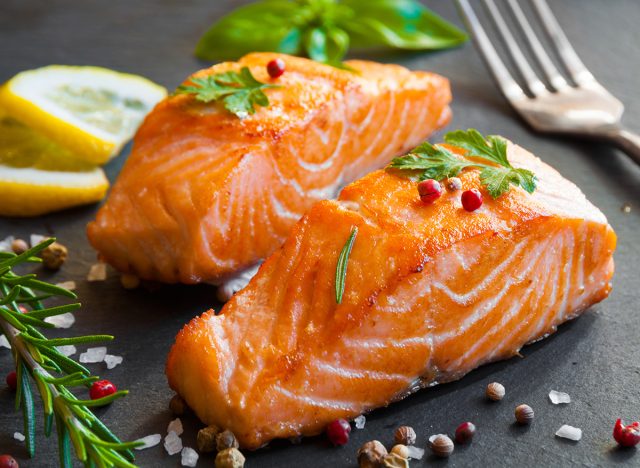
Wild-caught salmon has high levels of omega-3 fatty acids which help reduce inflammation. Inflammation can affect your ability to eat well, move well, and just feel good. Omega-3s are important because they balance out the standard diet which is high in omega-6 foods such as chicken, oils, and nuts. Salmon also reduces overall body pain and speeds recovery from workouts which is important for building and maintaining healthy muscle mass.
💪🔥Body Booster: When it comes to cooking salmon, or any food, I am a believer in the phrase "cook ingredients, not recipes." If you're busy like me, Salmon is arguably one of the easiest foods to cook. Pat it dry, pick the seasoning of your choice, and throw it in the oven for about 15 minutes. Pair this with just about any vegetable and starch and you have a balanced, functional meal full of protein and other nutrients.
Oats
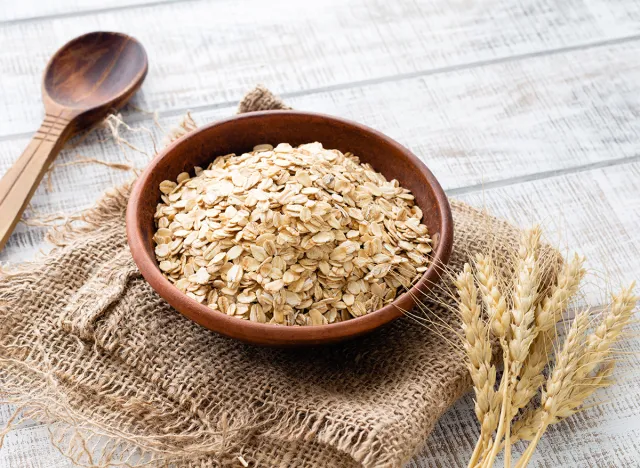
We've mostly talked about protein but carbs are an important part of building muscle as well. I know all the keto lovers are going to tell me how much muscle they build without carbs, but the reality is the keto diet only works for a select group of people. Oats are another easy breakfast to cook in the morning or meal prep with overnight oats.
💪🔥Body Booster: If you're looking to bulk, raw oats are an easy thing to dump into a protein shake to increase total calories and carbs without focusing on processed foods. The reason carbs are often looked at negatively is that so many of us eat carbs from pizza, white bread, or other processed places. Oats can help you recover, are packed with vitamins, minerals, and phytochemicals to keep us healthy and build muscle.
Chicken
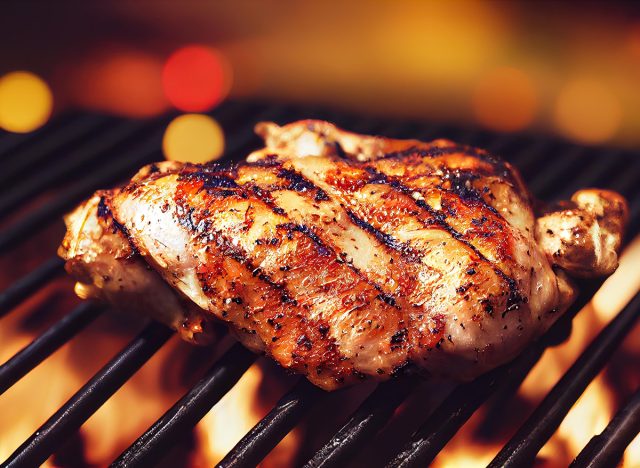
The seventh is Chicken which is a common go-to protein source for many people looking to build muscle. One of the things most people don't realize about chicken is it's also a good source of creatine, which most of us think of as a supplement but it is also naturally found in foods. It has almost the same amount of creatine as red meat. Chicken is a great protein option for keeping calorie count down while still eating your protein goal.
Related: 5 Secrets to Success Before You Start Your Next Diet
Beets
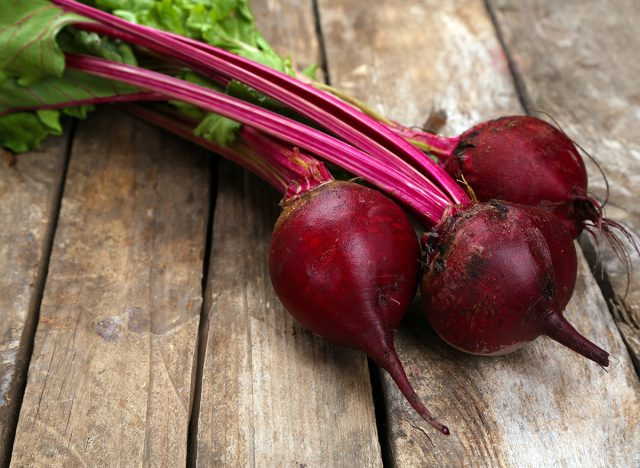
All vegetables are important for building muscle and maintaining a healthy lifestyle, but beets are one of my favorites for a few reasons. First, they contain nitrates which can help you train harder and see greater strength gains.
💪🔥Body Booster: I am a believer in having a serving of vegetables with every meal. My fridge is always stocked with pickled beets, which you can eat raw, making it one of the few veggies you can eat at any meal without any prep or cook time.
Lentils
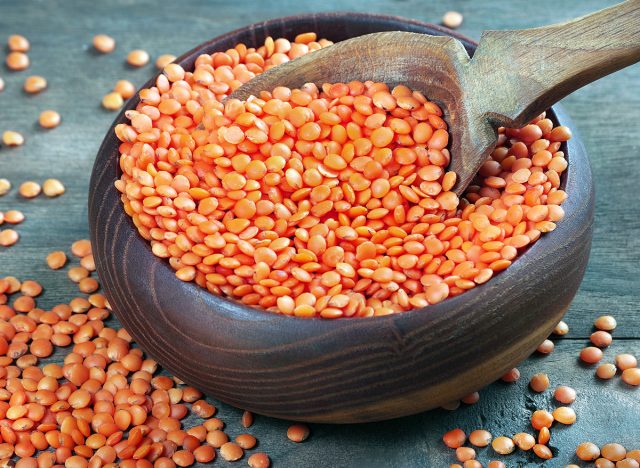
Ninth are lentils, which are great for everyone especially those on a plant-based diet. Lentils are incredibly high in protein. They're also high in fiber which many people don't get enough of. Fiber helps with digestion and even lowering cholesterol, which helps when eating a diet full of animal products. Lentils are also a slow-digesting carb meaning they can kick in after a workout to help you recover.
💪🔥Body Booster: When I was younger I used to sprint home from the gym to grab a protein shake or eat a post-workout meal. I do not have time for that anymore so slow-digesting carbs make sure your body is doing what it needs to build muscle even when you're back at your desk after the gym.
Chia Seeds
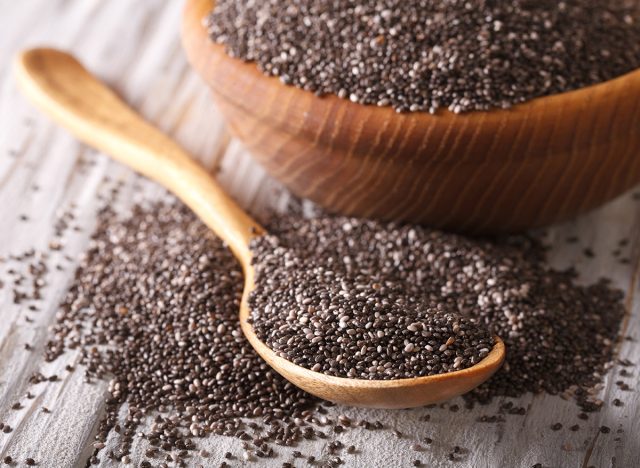
And tenth are chia seeds. These seeds are incredibly high in protein, they're fairly cheap, and can be eaten at breakfast lunch and dinner. Chia seeds can be put in anything from smoothies to cereal. Chia seeds can also soak in milk to make a delicious healthy chia pudding dessert for you or the whole family. The Terahumara people, made famous in the book Born to Run, are some of the best natural athletes in the world. They run for dozens of miles every single day, sometimes going over 200 miles at a time. Their favorite drink? Chia Fresca. It is essentially water and honey with chia seeds in it. Maybe it will make you able to run 200 miles as well!
💪🔥Body Booster: I always recommend letting chia seeds soak in liquid for about 5 minutes so they turn into a gel. This makes them easier to digest.
Related: 13 Proven Workouts for Building a Powerful Chest
When Building Muscles, Don't Eat Too Little
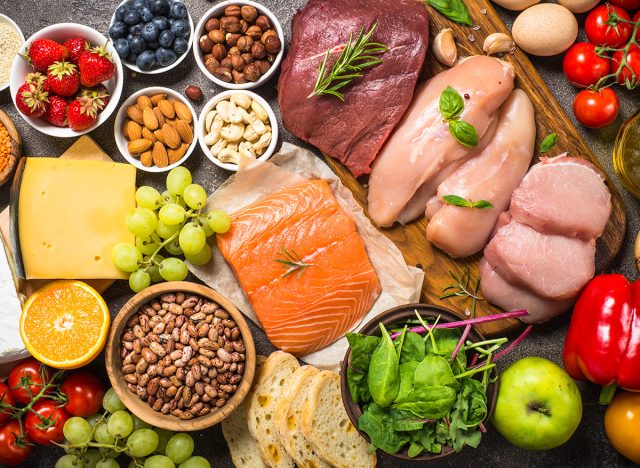
One common mistake when trying to build muscle fast is eating too little. A calorie surplus is a really important part of building muscles, especially fast. Something can't grow from nothing. So many of us believe that being fit means eating less and that's often not the case. Most of us need to eat less processed foods but eating too little food will result in no muscle growth. If you don't want to track your calories or protein intake in a food log, a simple rule to follow is: eat healthy portions of whole foods, along with some variety. A colorful plate is a healthy plate. Another common mistake is trying to limit protein intake per meal. There was a belief for a while that your body can only process so much protein at once. That's mostly untrue. If you limit your protein intake at each meal, it's more likely that you don't hit your daily protein goal which means you won't have enough to build muscle.
Add in Training to Build Muscle Fast
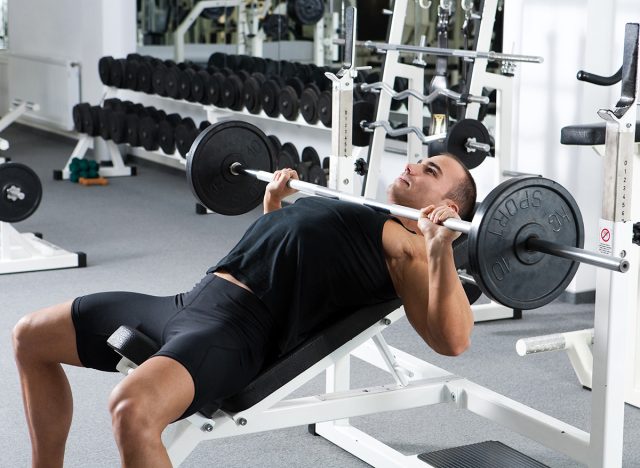
Resistance training/strength training is the other critical piece of building muscle. A good rule of thumb is 10 sets per week of each muscle group. For example, 3 sets of a bench press, 3 sets of rows, and 3 sets of bicep curls is about enough stimulation to grow your biceps. Going to the gym (or exercising at home) for 2.5-3 hours per week will usually be enough stimulus. Sleep is also vital. Muscles are not grown in the gym. They are repaired and grow stronger at night while you sleep. Do not skip this very important step. If you are consistent with eating enough protein every day, getting 7 hours of sleep on average, and doing resistance training a few times per week, you will build muscle. It's a fact. If you want to know more about how soda affects your health, don't miss my other article here on Body Network: 6 Disgusting Things Drinking Soda Does to Your Body.
Andrew Hayes is the Founder & Head of Lifestyle at Alta Coaching.




